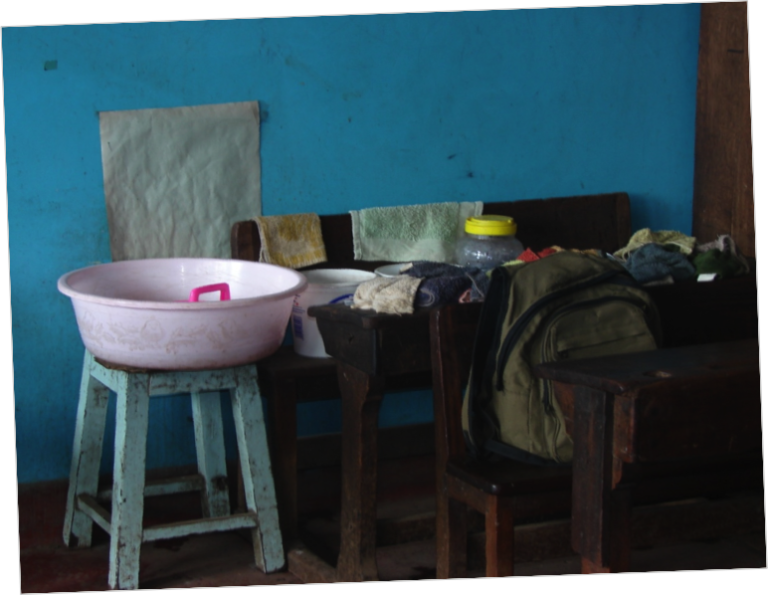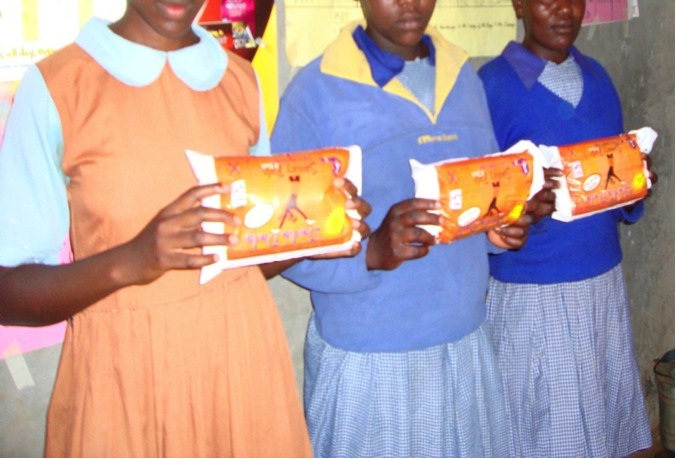How to Improve Enrolment and Retention of Children

Share this step
In Kenya, especially in the rural areas, education of children is generally left to teachers. Once children are enrolled in schools, the responsibility is left entirely to teachers. This is a big challenge especially after the increase in enrolment of children in school following the launch of Free Primary education in Kenya in response to education for all (EFA).
The teachers face major challenges in retaining children of diverse needs in their classrooms. Most of the children come from poor homes with limited resources that pose as barriers to their progress in the classroom. Hunger, illness, lack of basic necessities such as school uniform and books, pressure from parents for the children to stay at home and help with daily house hold chores are among the many challenges faced by children and teachers in the classroom. With such challenges, chronic absenteeism and dropping out of school are common in rural schools.
Maggie Kariuki tells us about a project she is involved in. In the text below, teachers share their efforts to keep the children in school. These are examples of individual interventions by classroom teachers and school heads, aimed at enhancing equitable and inclusive basic education. The teachers have attended Teachers’ Enhancement Programmes at Strathmore University. One of them is taking part in Maggie’s PhD programme.
- Remedial lessons:
These are lessons given to children with additional learning needs who are not able to keep the same pace with other learners. Remedial lessons include preparing simpler exercises for the children; these sometimes take place within the classroom during lessons or after classes. One class teacher in a rural school reported that she identified a group of children with reading difficulties and started helping them after school. Soon, other teachers reported that they had similar challenges in their classrooms. The head teacher was eager to help and she incorporated some reading sessions into the school timetable for these extra reading lessons to take place. According to the class teachers, this group of non-readers may drop out of school due to frustration, especially if they are older children.
One of the teachers says; “We may not do much but once we put them in a separate groups and help them to read slowly at their pace, they are encouraged and some are able to catch up and stay in school. If a child has an extra need that we are not able to meet, then we inform the head teacher to see if there are ways of helping the child. Some children have learning disabilities that are difficult for us to meet since we are not trained to do so. If the parents are not able to afford to take them to a special school where they can get help, we just keep them in school and encourage them to join the others in classroom activities, even though we know that they will not learn much. If they socialize with the rest through play and classroom activities, it is better than staying at home”.
Below is a picture of the reading group from the school’s lower primary classes.
- Classroom Hygiene:
According to a classroom teacher from another rural school, the issue of poor hygiene plays a role in keeping children away from school. Lack of clean water and soap causes diseases especially when children don’t wash their hands after using the washrooms. This contributes largely to absenteeism and in some cases dropping out eventually. This teacher reports that she encouraged parents to send their children to school with a piece of soap and a hand towel each. These are kept in the classroom next to a basin of water where children can wash up every time they come from the washroom.
The teacher says” “I think the idea itself is very exciting to the children – they want to come to school and wash their hands. We wash the hand towels with disinfectant every Friday and then arrange them neatly in readiness for the following week. Washing time is a happy time for the children. Even the sense of ownership of the piece of soap and towel is motivation towards coming to school. However,not all parents will send their children with these facilities and I am sometimes forced to buy a few hand towels for those who cannot afford. It is a small price to pay if a child can stay in school. Diseases such as stomach ache, skin rashes and diarrhea are common and although we may not manage to solve the problem entirely, getting them to wash their hands eliminates the minor and treatable cases.
Below is the towel and soap corner in the classroom

Picture below: Leak tins in school for hand washing practice to eliminate diseases
- More on hygiene:
Limited access to medical facilities for minor hurts and injuries becomes an issue to children, especially those in the lower primary. According to one teacher “Small wounds and scratches will discourage the children and especially when they do not receive attention from school or at home. If the parents are not so keen, a small wound will keep a child away from school. It will be reported that the child is sick and is not able to attend classes.”
This teacher started a “classroom clinic” where she calls all the children with wounds and applies disinfectant and a small bandage to those who need it. These facilities come from the school first aid kit and according to the teacher; “It works! The attention they get is enough to encourage them to report to school every day. It may look like a small issue, but I realize that our children respond very well to these small forms of attention”. The Classroom Clinic
- The girl child:
In Kenyan rural primary schools, the girl child is more prone to dropping out as compared to their male classmates. The girls are the most affected by cultural practices such as female genital mutilation (FGM), early marriages, pregnancy and lack of privacy as in the case of run down toilet facilities or in some cases no toilets at all. The issue of sanitary towels as teachers from rural schools report is a major cause of absenteeism and dropping out for the girls. The government of Kenya has greatly reduced the cost of sanitary towels in a bid to make them affordable for the poor rural communities; however, many poor families from the rural areas cannot afford this.
One teacher says; “It really isn’t a priority to them and sometimes the girls will not even tell their parents that they need these items. They use rugs which may cause diseases and which do not even give the needed protection. When I see a girl missing school for a number of days, I know that this is the problem. If she does not come back after one week, chances are she will not return. Some get married or others get pregnant and we lose them that way.”
One teacher decided to help the girls in her class 7 class. She asks some friends to contribute a few packets of sanitary towels every month and in this way, she is able to give a packet to the few girls in her class. A picture of class 7 girls receiving a packet of sanitary towels each

There are schools where efforts have been made to rescue the girl child. In the picture below, the head teacher from a rural, pastoral community organised for boarding facilities for girls so that they could stay in school.
- Lack of basic necessities:
Even with the waiving of school fees from primary school with the free primary education in Kenya, parents are faced with some extra charges for school uniform, books and other learning material.
A teacher says “Some parents will not afford even a little money to buy these necessities. Children from such families face the challenge of coming to school without books, with no shoes or with worn out school uniform. Such issues also contribute to absenteeism and dropping out. Sometimes there is nothing we can do but just let them go”. One teacher, Mrs Sadia (she has allowed me to use her name), will not let them go. She explains what she does to solve the problem of books and school uniform.
“I reach out to the community, especially to parents whose children have completed primary school and request them to donate books and uniform. Some time ago, I called up some people who were students in this school many years ago. I asked them if they could help the children. The response was overwhelming. I received many sets of uniform for the boys and girls. I was especially concerned about the older boys and girls who are shy to walk around with torn uniform. I keep these sets of uniform and books and distribute them to the children in need. I do not want my children to leave school if there is something I can do about it.”
*Mrs. Sadia is one of the teachers who took part in the school improvement projects. In the picture background, you see a beautiful school, clean and painted. She worked very hard to improve the situation. It was run down before she started working on it. She is a head teacher of a rural primary school. In the picture are children who have received school uniform and some books

These are some of the challenges that face teachers in the classrooms and within the school, and the efforts they make towards enhancing retention and enrolment. “Word goes round”, says one teacher. “If the community hears of a school where children are taken care of, they are willing to enroll them. It is a challenge for us especially with limited resources but we do what we can. Sometimes the community is helpful and that makes things easier.”
- Reaching out to the community:
In a bid to encourage enrolment and retention of children in school, teachers, especially head teachers, go out to the community to persuade parents to bring children to school. Sometimes they “rescue” underage girls who have been married off. In some cases, the parents plan these early marriages to get money from the dowry paid for the girl (such cases usually involve local government authorities to bring the children back to school).
There are many challenges facing rural Kenya primary schools and the ones explained above highlight on some efforts made by teachers who have gone through some teacher education training in order that they encourage enrolment and retention of children in school for equitable and inclusive basic education.
Additional reading
Free sanitary towels could help keep Tanzanian girls in school
Share this
The Right to Education: Breaking Down the Barriers

The Right to Education: Breaking Down the Barriers


Reach your personal and professional goals
Unlock access to hundreds of expert online courses and degrees from top universities and educators to gain accredited qualifications and professional CV-building certificates.
Join over 18 million learners to launch, switch or build upon your career, all at your own pace, across a wide range of topic areas.
Register to receive updates
-
Create an account to receive our newsletter, course recommendations and promotions.
Register for free







